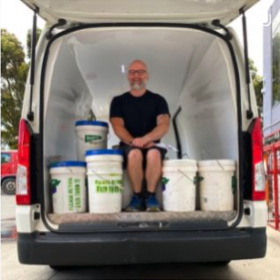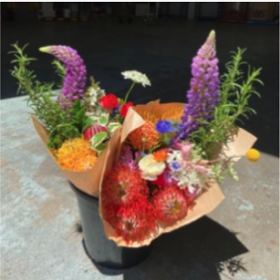If, like me, primary school history left you with the impression that pre-invasion Australian Aboriginal peoples were opportunistic nomads randomly wandering about an arid country, then a heartbreaking and yet exhilarating journey awaits you. In the past year two books have completely opened my eyes about Aboriginal peoples’ farming and land management, first Bruce Pascoe’s, Dark Emu and now Bill Gammage’s The Biggest Estate on Earth: How Aborigines Made Australia.
Like Dark Emu, The Biggest Estate on Earth draws on the diaries and accounts of early European explorers and settlers. In it time and again delighted yet mystified Europeans report on a landscape puzzle repeated across the continent – open rich grasslands dotted with the occasional mature tree that looked for all the world like a “Gentleman’s Park. And unlike the arid land we learned about at school instead there were reports of deep, soft soils, fish, fowl and game in abundance.
More watchful new arrivals saw what was behind these “park-like” landscapes observing the original farmers use of well timed hot or cool burns sensitive to the seeding times of plants, breeding patterns of animals, the fire tolerance or trees and food plants. They watched these farmers intelligently use fires along with landscape features like slope or stream to shape the vegetation and rotate game species from one area to another, making the harvesting of plants and animals convenient and predictable.
Gammage explains this template of management was repeated again and again across our whole country with timings & techniques altered to suit local conditions. The system guided and under-pinned by spiritual law with the aim to create a landscape balancing needs of various species that continually rested and renewed the land. The scale of it all and the application needed to achieve this can be illustrated by the discovery of Tasmanian Aboriginal peoples using fire, driven by prevailing winds, to slowly rotate whole grasslands plains through wet rain-forests over many generations.
Like the local culture, Gammage illustrates the first Europeans didn’t understand the landscapes they were taking for themselves. Some assumed this rich open country their sheep were now thriving on was purely the work of God. That sad truth was slowly revealed time and again as the kangaroo grasses were eaten out by sheep, the spongy soils were compacted and eroded, the creeks stopped flowing and clearings were reclaimed by thick scrub. And though some of the more savvy settlers imitated Australian Indigenous people’s land management, we have never gained the skills with fire or the understanding of our land to replicate the original farmers’ results on any scale.
Today we’re still coming to grips with how to care for this land and provide for ourselves into the future. We’re also still coming to grips with how to reconcile and live respectfully with Aboriginal peoples. But with greater understanding comes greater respect. And through books like Bill Gammage’s and Bruce Pascoe’s when we begin to understand and see value in each other then the true reconciliation begins.
If you’re interested in sustainable agriculture and landscape design The Biggest Estate on Earth: How Aborigines Made Australia is as exciting a book as when you first read about Permaculture or Holistic Land Management or something by Joel Salatin, Wendell Berry or one of those inspiring guys.



